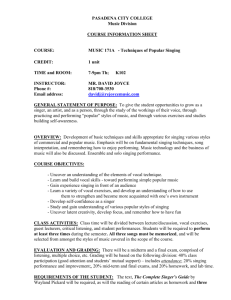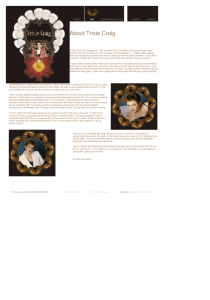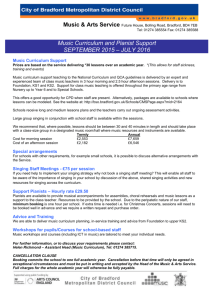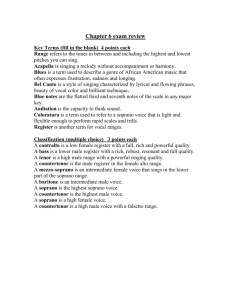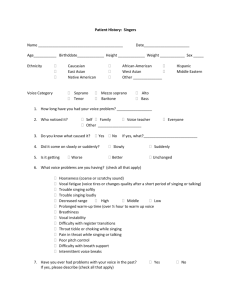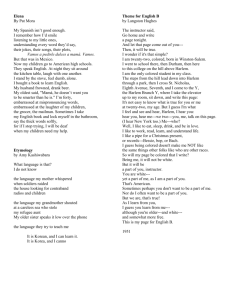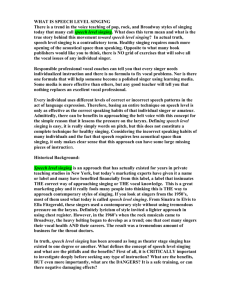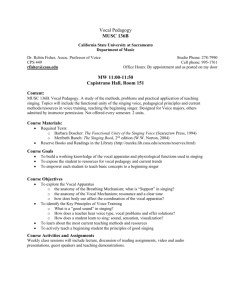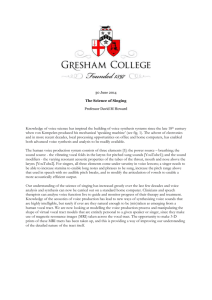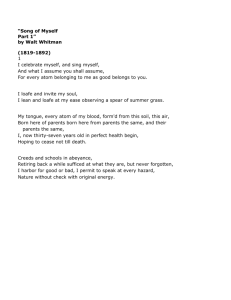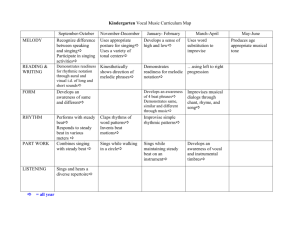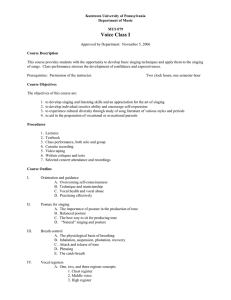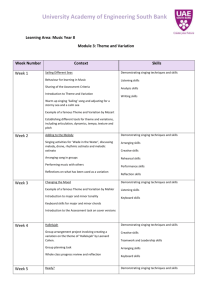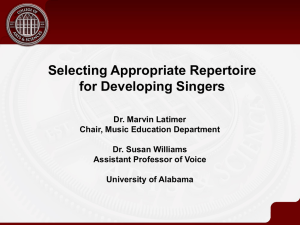Professional Voice U..
advertisement
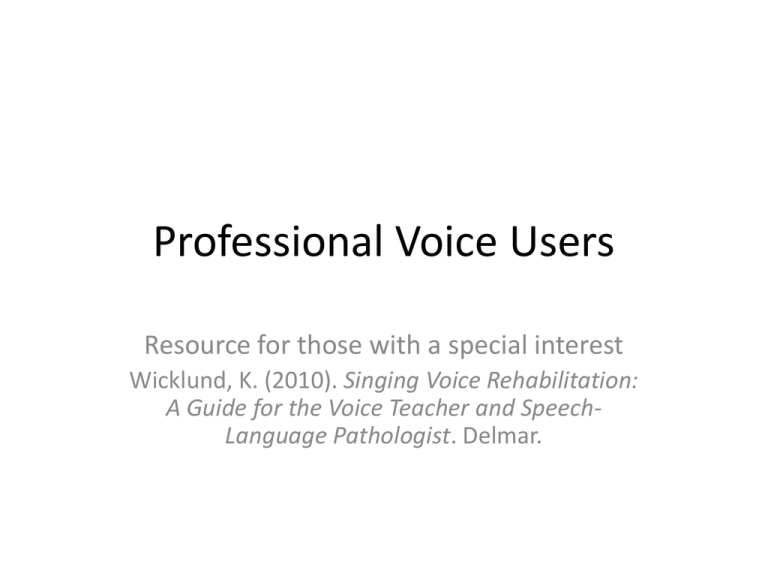
Professional Voice Users Resource for those with a special interest Wicklund, K. (2010). Singing Voice Rehabilitation: A Guide for the Voice Teacher and SpeechLanguage Pathologist. Delmar. Types of Professional Voice Users • Vocalists – Singers – Singing teachers and therapists • Voice Professionals – Stage, screen and TV actors – Radio and TV personalities – Announcers • Other Professional Voice Users – Teachers, salespersons, SLPs, etc Who works with the PVU? Schneider and Sataloff, (2007) Case History Voice Symptom History • Distinguish between speaking voice and singing/performing voice when establishing symptom history Details of Vocal Activities • What is the professional/performance activity? – acting, singing, public speaking, recitation, etc. • Genre of music for a singer – jazz, classical, rock, country, etc • Classification of voice – soprano, mezzo-soprano, alto, tenor, baritone/bass • Range of singing activities – Solo, choral, both (if so, are the ranges similar) • Performance environment – physical space, audience size, etc Professional Activities and Goals of Client • Professional status or goals (students) – Vocalist vs. music teacher vs. music therapist – Professional singer, serious amateur Vocal Use Patterns • Distinguish typical communication activities from professional/performance activities • Get a clear idea about frequency, intensity and type of practice and performance • NOTE: Student vocalists may be singing more than a working professional! Vocal Training • Is there a history of training? • If so, – How long? – Currently in training? – What type? – Different instructors? Auditory Perceptual Evaluation • Separately evaluate speaking voice and singing/performing voice • Collect good samples of each type of task – Collect singing samples within genre and with something familiar to client Remember… • Professional voice users are prone to developing the range of voice problems that others develop. • So, don’t simply assume that problems are always due to vocal use patterns! Management Considerations • DO NOT ignore the speaking voice when working with a vocalist – Same instrument used for both speaking and singing – Healthy singing patterns may not be accompanied by healthy general vocal patterns – These points need to be clearly articulated to the client • Personality factors associated with the performer Management Considerations • Avoid straining while attempting to produce character voices • Avoid performing during times of upper airway illness • Avoid “out of range” roles • Prioritize vocal demands • Use amplification of possible • Use “marking” techniques for rehearsals • Allow adequate warm-up and warm-down activities Management Considerations • Be willing to observe clients in their typical performance space • Be willing to consult with other professionals • Be willing to admit what you don’t know Suggestions for those with minimal background in music/singing • Find trustworthy professionals in your area for referral or personal training • Take or observe some voice lessons

